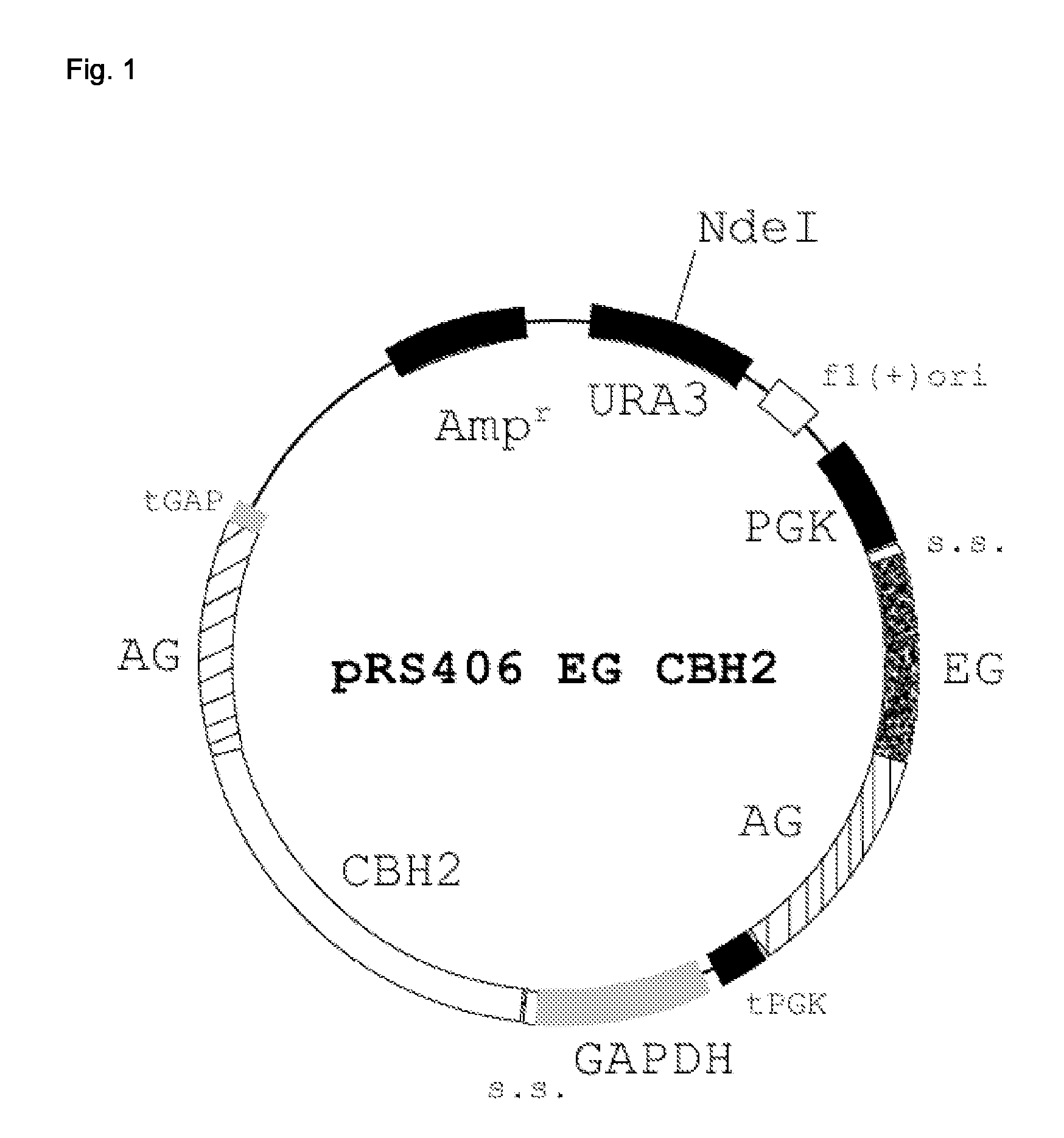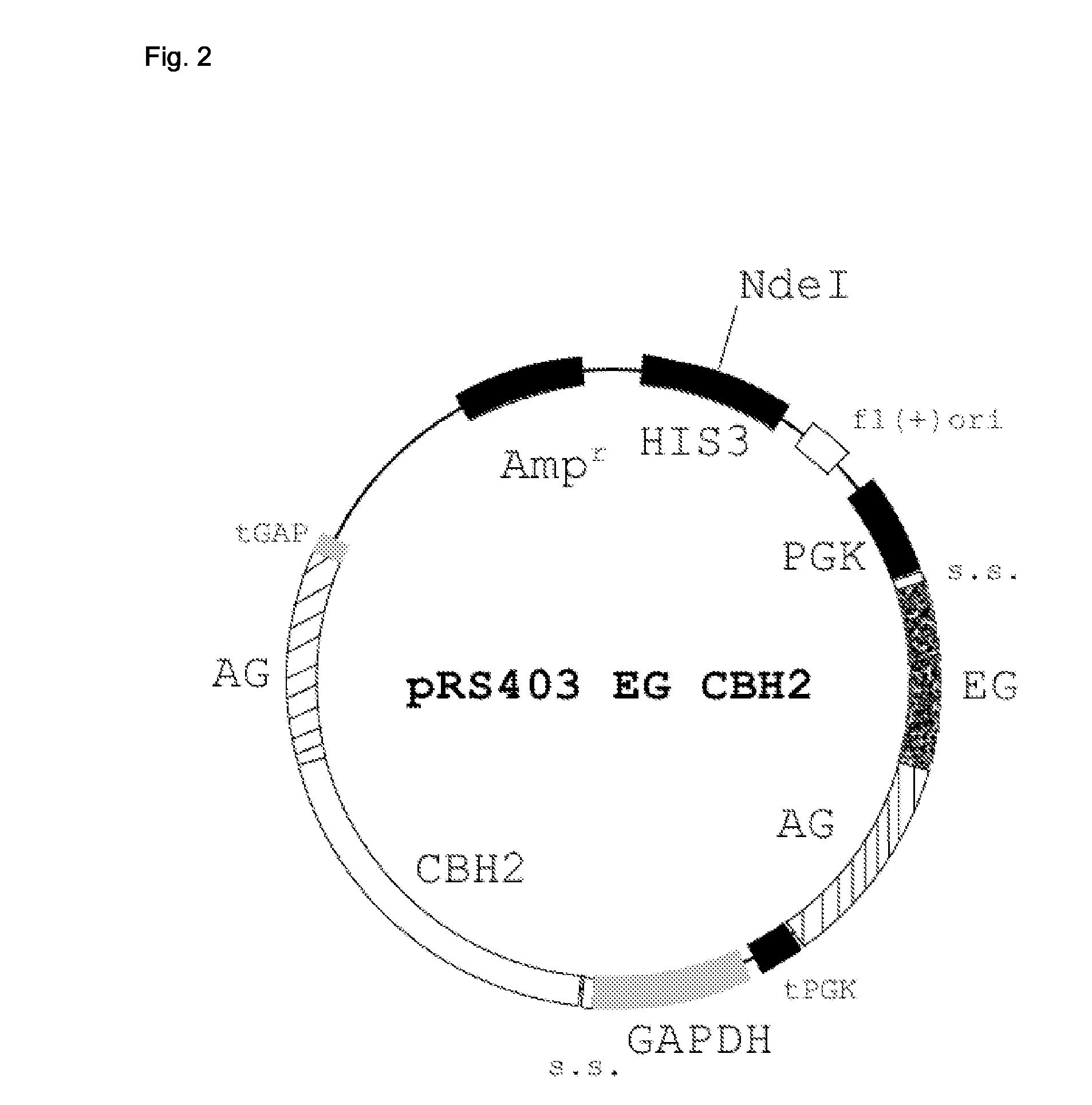Production and use of yeast having increased cellulose hydrolysis ability
- Summary
- Abstract
- Description
- Claims
- Application Information
AI Technical Summary
Benefits of technology
Problems solved by technology
Method used
Image
Examples
preparation example 1
Preparation of Yeasts Provided with URA3, HIS3, TRP1, and LEU2 Auxotrophic Markers
preparation example 1-1
Provision of URA3 Marker
[0116]A mutant URA3 fragment was obtained from Saccharomyces cerevisiae MT8-1 (MATa ade his3 leu2 trp1 ura3) by PCR using a pair of primers having SEQ ID NOS: 1 and 2. This fragment was transformed into Saccharomyces cerevisiae NBRC1440 (MATα), and a URA3 variant was selected in a 5-fluoroorotic acid (FOA) medium, giving an NBRC1440 strain provided with a URA3 marker.
[0117]The 5-fluoroorotic acid (FOA) medium was prepared in the following manner. A uracil dropout synthetic dextrose (SD) medium (Non-Patent Document 8) supplemented with 50 mg / L uracil acid and 2% (w / v) agar was autoclaved and kept at 65° C. FOA was dissolved in dimethyl sulfoxide (DMSO) to a concentration of 100 mg / mL and added to the autoclaved medium having a temperature of about 65° C. to a final FOA concentration of 1 mg / mL.
preparation example 1-2
Provision of HIS3 Marker
[0118]Fusion PCR was carried out as follows:
[0119]In PCR1, HIS3-Green U (SEQ ID NO: 3; Forward) and HIS3-Green R (SEQ ID NO: 4; Reverse) primers were used with the chromosome DNA of Saccharomyces cerevisiae NBRC1440 as a template to amplify a sequence upstream of HIS3.
[0120]In PCR2, URA3 fragment (SEQ ID NO: 5; Forward) and HIS3-40Uc (SEQ ID NO: 6; Reverse) primers were used with a pRS406 plasmid (Stratagene) as a template to amplify URA3.
[0121]In PCR3, HIS3-Green U (SEQ ID NO: 3; Forward) and HIS3-40Uc (SEQ ID NO: 6; Reverse) primers were used with mixed products of PCR1 and PCR2 as a template to amplify a fused fragment.
[0122]Using the obtained fused fragment, the NBRC1440 strain provided with a URA3 marker prepared above was transformed by homologous recombination. A strain lacking a uracil auxotrophy was selected on a uracil dropout (uracil-free medium) plate. The integration of this construct into the chromosome of the foregoing industrial yeast NBRC1440...
PUM
 Login to View More
Login to View More Abstract
Description
Claims
Application Information
 Login to View More
Login to View More - R&D
- Intellectual Property
- Life Sciences
- Materials
- Tech Scout
- Unparalleled Data Quality
- Higher Quality Content
- 60% Fewer Hallucinations
Browse by: Latest US Patents, China's latest patents, Technical Efficacy Thesaurus, Application Domain, Technology Topic, Popular Technical Reports.
© 2025 PatSnap. All rights reserved.Legal|Privacy policy|Modern Slavery Act Transparency Statement|Sitemap|About US| Contact US: help@patsnap.com



